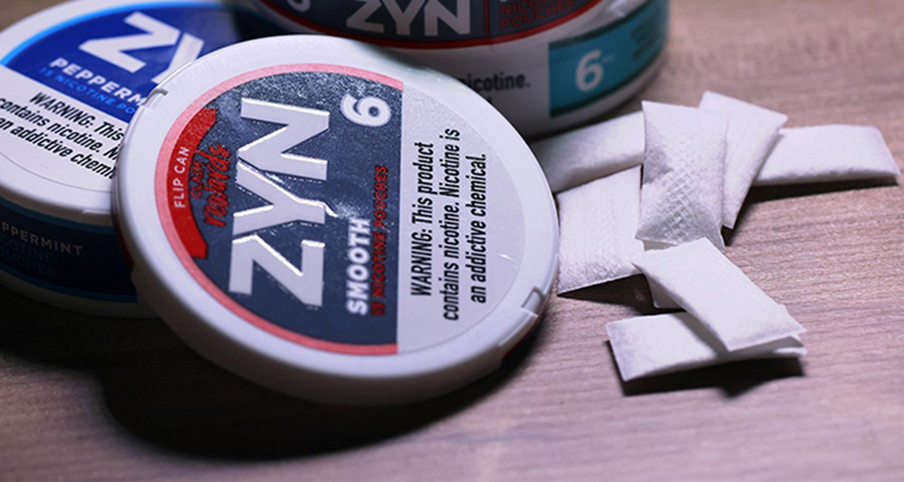
Scientists at Georgetown University’s Lombardi Comprehensive Cancer Center have synthesized evidence from 62 studies related to the use of oral nicotine pouches to better understand their potential impact on public health. The findings have been published in Nicotine and Tobacco Research.
“Oral nicotine pouches are rapidly increasing in popularity. While they may present a less harmful nicotine alternative for cigarette users, there is considerable concern about them becoming a new form of nicotine dependence, especially in youth who don’t use tobacco or nicotine,” said the study’s corresponding author, Nargiz Travis, in a statement.
The investigator’s analysis was based on 45 academic and 17 industry-funded studies, mostly from the U.S. Sales of the products have been concentrated in Scandinavia and the U.S., mainly because of the established smokeless tobacco market in these regions.
In the U.S., the researchers found, based on nationally representative surveys, that through 2023, oral nicotine pouches were currently used by 1.5 percent of all youth while lifetime use by young people was under 2.5 percent.
In terms of awareness of the products, between 35 percent and 42 percent of U.S. adolescents and young adults have heard of oral nicotine pouches, and 9 percent to 21 percent of tobacco-naive (nontobacco users) youth surveyed were not opposed to trying them. U.S. adult usage estimates varied widely across surveys; in 2023, 0.8 percent to 3 percent of Americans currently used the products while 3 percent to 16 percent used them at some point in time. In view of rising nicotine pouch sales trends in 2024, their use in the U.S. population has likely increased.
“Because oral nicotine pouches do not contain tobacco leaves, they are often marketed as tobacco-free, but we found that descriptor may confuse the understanding of the source of nicotine and may be associated with the perception that they are not as harmful as other tobacco products,” says Travis.
The investigators’ findings suggest fewer harmful chemical compounds are present in the pouches and occur at lower levels than in cigarettes and smokeless tobacco, with the exception of formaldehyde. However, an analysis of 37 oral nicotine pouches of different brands, nicotine strengths, and flavors yielded a wide range of total nicotine content from 0.89 mg to 6.73 mg per pouch.
“In the U.S., oral nicotine pouches are currently neither authorized by the FDA for marketing as a modified-risk product nor approved as a cessation product. It is important to know that nicotine is an addictive chemical with harmful health effects, regardless of whether it is synthetic, meaning tobacco-free, or derived from tobacco,” added Travis.
One of the studies included in the authors’ analysis was a U.S. survey of young adults aged 18 to 34, many of whom used cigarettes and e-cigarettes. The survey found that curiosity about the product (28 percent), flavors (26 percent), and the ability to use in places where other tobacco products are prohibited (26 percent) were among the main reasons for trying the pouches. The availability of flavors (31 percent) was the main motive for use in another U.S. sample of adult current nicotine pouch users.
Leading brands of the products are currently owned by major tobacco companies. The authors note that a substantial investment in marketing by the companies suggests that oral nicotine pouches are becoming increasingly important to the tobacco industry.
“As more evidence on oral nicotine pouches becomes available, and more importantly, more independent studies become published, it will be essential to conduct further analyses comparing the findings of industry versus non-industry sponsored research and critically assess the quality and risk of bias of such studies,” said Travis.
Analyzing the Reasons for the Popularity of Nicotine Pouches
Nicotine pouches have surged in popularity due to several compelling reasons:
- Perceived Health Benefits: Many users perceive nicotine pouches as a less harmful alternative to smoking and smokeless tobacco. The absence of tobacco leaves and the presence of fewer harmful chemicals, as indicated in the Georgetown University study, play a significant role in this perception.
- Convenience and Discretion: Nicotine pouches are discreet and can be used in places where smoking is prohibited, such as indoors or in public spaces. This convenience appeals to many users who seek a nicotine fix without the smoke or smell associated with traditional cigarettes.
- Variety of Flavors: The availability of a wide range of flavors makes nicotine pouches attractive, especially to younger users. Flavors like mint, fruit, and coffee can mask the harshness of nicotine, making the experience more pleasant.
- Marketing and Accessibility: Major tobacco companies have heavily invested in marketing nicotine pouches, increasing their visibility and availability. This aggressive marketing strategy contributes to their growing popularity.
- Alternative to Smoking Cessation: While not approved as cessation products, some users turn to nicotine pouches as a way to reduce or quit smoking. The controlled nicotine release helps manage cravings.
- Curiosity and Peer Influence: Curiosity about new products and peer influence, especially among young adults, drive experimentation and subsequent use of nicotine pouches.
To explore a variety of nicotine pouch brands and their offerings, visit nicotinepouchbrands.com.
The popularity of nicotine pouches is driven by a combination of perceived health benefits, convenience, flavor variety, marketing efforts, and their use as a smoking alternative. However, it is essential to approach their use with caution due to the potential for nicotine dependence and the need for more research on their long-term health impacts.


